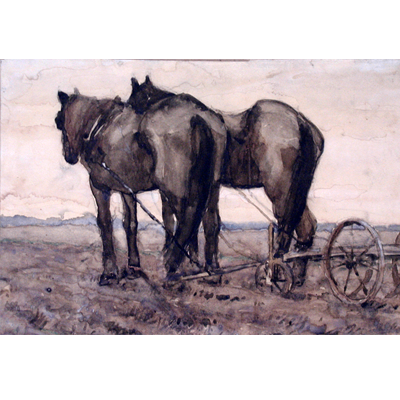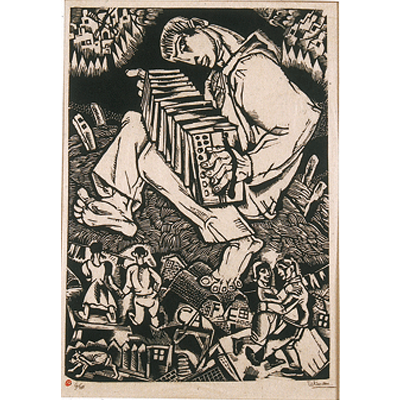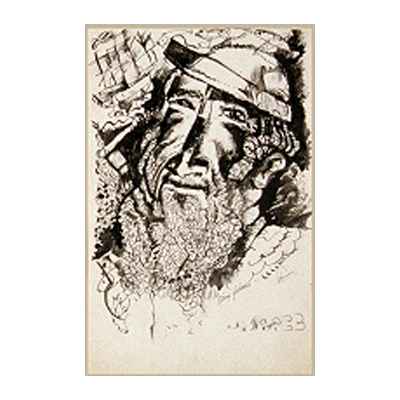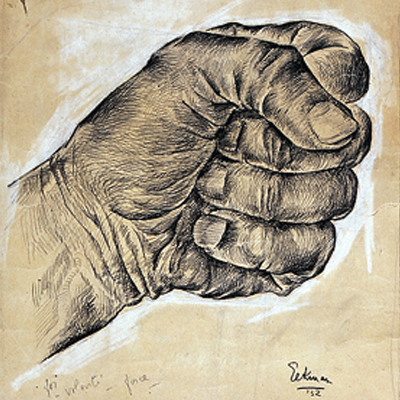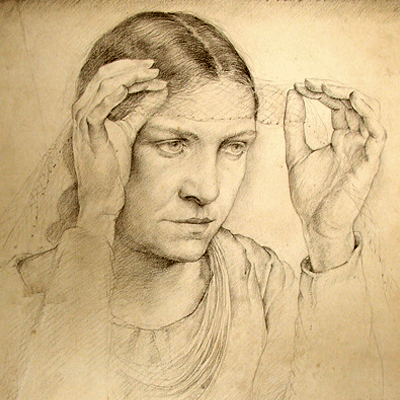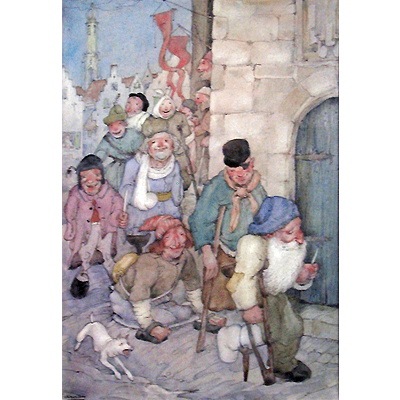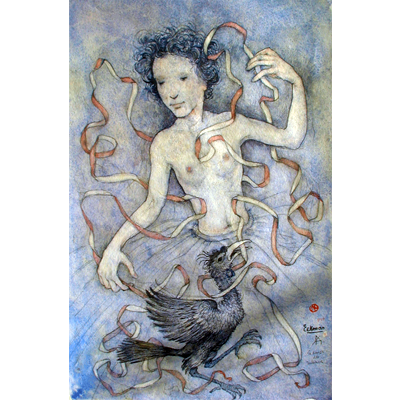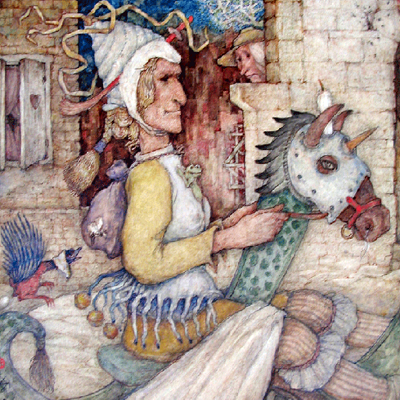Biography
- 1889
- Nicolas Eekman is born in Brussels, Belgium./dd>
- 1907
- At 18, he gives his first lecture in Brussels on "Van Gogh, The Unknown".
- 1912
- He sees Van Gogh’s first exhibition in Cologne (Germany) that will remain for him a shattering and decisive experience.
- 1913
- Studies architecture at the Academy of Fine Arts in Brussels.
Turns towards Latin culture, but his Flemish roots remain vivacious.
He received his diploma in architecture while painting and engraving. A few months in the painting section are enough to make him understand that academicism is not his way. - 1914
- Stays in the presbytery of Nuenen, in The Netherlands. (see Eekman by Eekman).
- 1915
- First exhibition at the Audretsch Gallery at The Hague where he is discovered by the great essayist and critic Bremmer. Among his first customers Mrs. Kröller-Müller founder of the famous Kröller-Müller Museum. Until the end of the war, he made a series of exhibitions in the country and had many purchases by major Dutch museums (in Amsterdam, Arnhem, Dordrecht, The Hague, Eindhoven).
- 1921
- He settles permanently in Paris and is a part of all the artistic movements of the time.
He becomes a member of the "Independents" and the Society of Engravers "The Line".
He meets Armand Nakache which friendship will continue forever.
He sees regularly Paul Signac and Piet Mondrian, they meet in their respective workshops or at the brasserie "La Rotonde" in the Montparnasse area in Paris.
International exhibitions and purchases follow one another (in Belgium, Scotland, Switzerland, The Netherlands, Austria, the USA, etc...). He regularly is a part of the Venice Biennale in Italy. - 1924
- He become friends with galerist Jeanne Bucher in Paris. She commissions and edits the engraving "The Library". Many woodcut prints are sold in Stockholm, Brussels, Munich, Boston, Detroit , etc...
- 1925
- Sudden death of his first wife Hetty (Hedwig van't Hoog) with whom he had a daughter, Henriette. Throughout these years, Eekman binds friendship not only with Mondrian but also with Jean Lurçat, Marcoussis, Max Jacob, Samuel Lipschitz, and later with Moise Kisling and Frans Masereel. At the Jeanne Bucher Gallery, he also meets Marc Chagall, Max Ernst and his wife Marie-Berthe who he portrays.
- 1928
- Eekman and Mondrian exhibit together at the Jeanne Bucher Gallery.
It is the only time that Mondrian will have an exhibition in Paris.
Many purchases of engravings by the Print Cabinet in Germany (Hanover, Berlin, Hamburg, Dresden, Muhlheim, Munich, Essen, and even Basel and Budapest).
In relation with Andre Lhôte, Fernand Léger, Edouard Goerg, etc…
All these fruitful contacts assert, at 39 years old and at the margins of all artistic movements, his mission as an artist.
He marries Jeanne Bucher’s librarian Andrée Herrenschmidt with whom he will have a daughter, Luce. - 1930
- He is a part of the Art Institute of Chicago where there will be group exhibitions in 1932, 1934, 1937 and 1938.
- 1931
- Tours in Indonesia.
Meets Edouard Pignon who he will often see. - 1932
- Hungarian sculptor Geiger makes an excellent mask of Eekman.
- 1933
- Exhibits in Paris at the Duncan Gallery where he opens a workshop for two years.
He writes and illustrates a children's book "The Motionless Traveller", published by Berger-Levrault.
He illustrates the book "The Destinies" written by Alfred de Vigny (drypoints).
There are 60 copies of the book. Eekman is one of the sixty most popular artists at that time that are chosen to illustrate each one a volume (including Picasso, Chagall, Max Ernst, Dunoyer de Segonzac, Signac, and so on). - 1934
- At that time he makes about twenty bookplates.
- 1936
- Paul Fierens, curator of the museums in Belgium, writes a monograph Eekman.
Solo and group exhibitions carry on in Paris, The Hague, Amsterdam, Budapest, Prague, Chicago, Toronto, etc… - 1937
- The Print Cabinet of Brussels buys all Eekman’s existing engraved works.
- 1939
- Draws his famous drawing of the injured Don Quixote which has been showed thereafter in favour at the National Library in Paris during the exhibition "Books and documents concerning Cervantès".
- 1940
- Sought by the Nazis, he takes refuge in the Basque country in the South West of France and signs his works momentarily "Ekma".
- 1941
- In Saint-Jean-de-Luz, he draws 22 drawings and befriends with Maurice Bedel who will write related texts entitled "De Re Rustica" (never published).
- 1942
- His bond of friendship with painter Fred Klein, Yves Klein’s father, will last a lifetime./dd>
- 1944
- Very important exhibition at the Palais des Beaux Arts in Brussels wich will be visited by Queen Elizabeth of Belgium.
- 1945
- Group exhibition in Casablanca (Morocco) and at the Denise René Gallery in Paris.
He illustrates the "Tales of a Beer Drinker" written by Charles Deulin, published on the presses of Mr. Weissenbruch, printer of the King of Belgium for publisher Guy Le Prat and for the Associated Authors Publishers in Brussels.
In contact with André Gide. - 1946
- Tour in Brazil and Mexico organized by collector T. Garaï.
Engraves 25 drypoints for Charles de Coster’s Legend of Thyl Ulenspiegel.
Received at Laeken Castle in Brussels, Eekman gives a copy of the book to Queen Elizabeth.
Major exhibition at the Durand-Ruel Gallery in Paris. - 1948
- Exhibition at Antwerp, Bruges, Ghent, Brussels, Strasbourg.
Publication of the second album devoted to the works of Eekman, with an introduction by Maurice Fombeure. - 1951
- The Chalcography of the Louvre dedicates Eekman’s engraved works and commissions a drypoint: "Turkeys".
In contact with Dr. J.-B. de la Faille, scholar and Van Gogh expert, who will write an essay on Eekman in 1961. - 1952
- Invited by the League of cultural exchanges between The Netherlands and Switzerland, he exhibits in Basel, at the Katz Gallery.
- 1955
- Dr. Albert Schweitzer, his wife’s godfather, regularly visits him at his workshop. Eekman made several sketches of him on the spot.
- 1956
- Mons (Belgium) becomes a center where young artists can be found around Eekman every time he visits. He is very respected.
International exhibition in Deauville where he received the price of the Nude.
Exhibitions abroad and in France. - 1958
- Losing the ties that binds him to the small harbour of Sanary-sur-Mer where he used to go each year and make a trip to Italy, he buys a pied-à-terre at the Winter Palace in Menton where he will make regular visits until his death.
- 1961
- Commissioned for a major wall panel on wood (98.4 x 55 inches) on medicinal plants in the world, theme given by Professor H. Griffon and delivered to the pharmacy of the Air Base at Orly (Paris).
- 1962
- With some quite phantasmagoric works, Eekman is a part of a surrealist exhibition in Mons (Belgium) at the Lucidel Gallery.
- 1964 à 1968
- Exhibitions at a steady pace in Switzerland, Holland, Belgium and France.
With pride, and despite his success, Eekman is part of the "real cursed painters". - 1973
- Great retrospective at the Reflets Gallery in Brussels a few weeks before his death.
He died suddenly at his home on November 13th in Paris, leaving a heritage of approximately 3,000 works.
He is buried at the cemetery of Ivry, near Paris.




